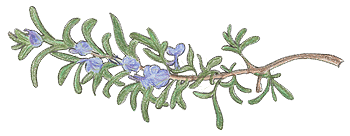Carl Ben Eielson Memorial Arch
County: Traill, North Dakota
Location: Entrance to St. John's Cemetery, 1 mi N of town of Hattan on Highway 18

Coordinates: N47o39.488' W97o27.222'
The famed aviator Carl Ben Eielson was born in Hatton, North Dakota, on 20 July 1897. He graduated from the University of North Dakota. Following non-combat service in the Army Air Corps during the Great War, additional college education, and some barnstorming experience, Eielson acquired fame as a bush pilot and mail pilot in Alaska during the 1920s. His legend grew as he carried medical supplies to isolated posts, brought out injured citizens needing medical care, and rescued travelers in trouble.
Eielson partnered with the Australian explorer, Sir Hubert Wilkins, for a series of airborne Arctic explorations. In 1928 Eielson and Wilkins took off in a Lockheed Vega to make their famous flight "over the top of the world" from Point Barrow, Alaska, over the North Pole to Spitzbergen, Greenland, where they landed on 21 April. The same year Eielson flew with Wilkins on an Antarctic expedition. Eielson's courage and talent won him both the Distinguished Flying Cross and the 1928 Harmon Trophy for the outstanding aviation accomplishment of the year. After that he returned to commercial aviation in Alaska, founding his own company.
Eielson and his pilots in 1929 took part in the rescue of passengers from a ship, the Nanuk, caught in ice off the Siberian coast. He and his mechanic, Earl Borland, were lost in a blizzard on one of these flights of mercy. American, Canadian, and Russian flyers searched for seventy-seven days before one of them spotted a wing-tip of Eielson's plane and the lost men's remains were brought out by dogsled--Eielson's eventually to reach his old home town, Hatton. His funeral there, on 26 March 1929, was the second-largest in the history of his native state.
Eielson's monument, near Hatton, is an arch over the entrance to St. John's Cemetery. The arch, of Indiana limestone, is about twenty feet high, thirty feet wide, and four feet thick. On either side are mounted bronze plaques recounting the polar pilot's life and achievements. Proceeding through the arch into the cemetery, the visitor espies the Eielson family plot, with its prominent marker, directly ahead; here the aviator rests with family, some of whose coffins had to be moved back from the entrance to make room for the heroic memorial arch.
Fundraising for the memorial began in 1930 and included the solicitation of pennies from schoolchildren across the state. It took a few years to get the money together; at one point the children of Wild Rose, North Dakota, wrote to the organizers, "If you're not going to build it soon, please send back our $3.24." Eventually came the completion and, in 1938, the dedication, on which occasion Governor William "Wild Bill" Langer said of Eielson, "In his veins flowed the Viking blood, in his heart burned the Viking desire. . . . To that same Viking urge we owe much of the development of this state and nation." Wilkins arrived a day late for the dedication, remarking, "He was more than my pilot, he was my buddy." Both Wilkins's comment and the memorial arch are honest tributes to Hatton's favorite son.--Research by Simon Hochstein, HIST 489, NDSU, Spring 2007
Recommended Reading
Page, Dorothy Guzzi. Polar Pilot: The Carl Ben Eielson Story. Danville: Interstate, 1992.
Potter, Jean. The Flying North. New York: Macmillan, 1947.
Rolfsrud, Erling Nicolai. Brother to the Eagle. Preface by Sir Hubert Wilkins. Alexandria: Lantern Books, [1952].
Wambheim, H.G. "Ben": The Life Story of Col. Carl Ben Eielson. Hatton, 1930.
Theodore Roosevelt Roughrider Award / National Aviation Hall of Fame
| Photo Gallery |
 |
 |
 |
 |
 |
Photos by Simon Hochstein, 19 March 2007, & Tom Isern, 6 May 2007 |
Video
6 May 2007 |
|---|
Want to talk about this monument, or other heritage sites on the northern plains? Join the discussion on Facebook. Check out the center's Facebook group, Heritage Trails.
 Remembrance in Stone / Center for Heritage Renewal
Remembrance in Stone / Center for Heritage Renewal
|